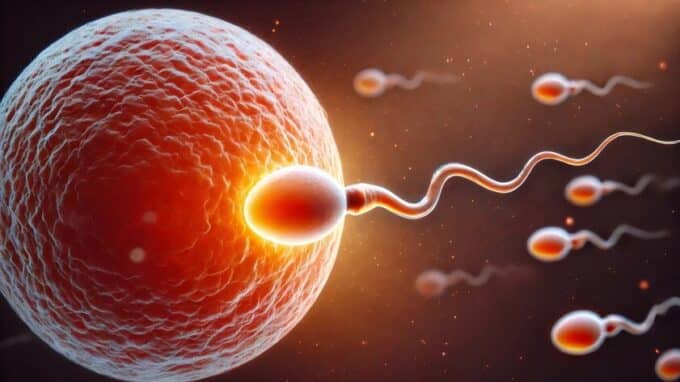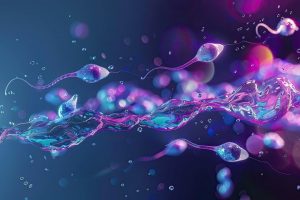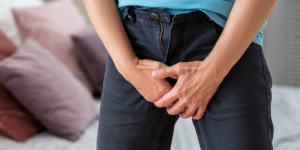Sperm cells are highly specialized cells with only one goal: to fertilize an egg. On the road to fertilization, sperm must travel a long journey to the female’s fallopian tube, avoiding several deadly stresses that occur as they pass through different physiological environments. However, the processes that enable sperm to achieve fertilization under these conditions are only partially understood. In a study published in the FEBS Journal, researchers report that they have discovered a cell volume regulator in sperm that plays a key role in maintaining their shape and fertility.
Taurine is Essential for the Fertilization Process
Most of a cell’s mass is water, and this water can determine a cell’s volume. The membrane surrounding each cell is leaky, allowing cells to take in or release excess water depending on how much water surrounds them (a phenomenon known as “osmosis”). This property is similar to the behavior of a sponge – as with a sponge that absorbs too much water, changes in water level can drastically alter the volume and ultimately the shape of a cell. “Cells have sensor mechanisms that allow them to compensate for changes in their osmotic environment,” says corresponding author Atsushi Asano, assistant professor at the University of Tsukuba. Without these compensatory sensors, cells would experience excessive volume changes, leading to membrane rupture or other morphological problems. This type of sensor is quite common in cells, but we were surprised to find one that plays a significant role in the function of sperm.”
Previously, male mice lacking cysteine dioxygenase (CDO) were found to be infertile. CDO is a protein known to make the amino acid taurine, which is in turn known to play a role in osmosis. While these facts are not new, the exact role of CDO and taurine in fertilization has long been debated. In the study, the researchers confirmed that male mice lacking CDO are indeed more likely to be infertile than their healthy counterparts – in fact, more than 10 times as likely. They also found that taurine levels in the sperm cells of these mice dropped dramatically. This indicated a clear link between the two defects, but there was a puzzle with these results: sperm cells are not able to make proteins, including CDO. So how did the sperm get the taurine that was so important for their function? The team discovered that, rather than making their own taurine, the sperm absorbed taurine as they passed through the male genital tract. “The absorption process appears to be an important survival strategy for sperm during fertilization, since mature sperm cannot make proteins on their own,” says co-author Ai Ushiyama. The results convinced the researchers that taurine is essential for the fertilization process, but they still had to find out exactly what taurine does in sperm.
Sperm Avoid Lethal Osmotic Stress by Taking Up Taurine as They Traverse Male Reproductive Organs
The researchers homed in on a crucial clue: an unusual “kink” at the end of the sperm. Sperm from CDO-deficient mice were almost twice as likely to have a kinked end in an environment like the uterus. Strikingly, the defect disappeared when the sperm were supplied with extra taurine. These observations led the authors to conclude that taurine helps maintain the correct shape of sperm during fertilization by controlling osmosis.
“Our results show that the production of taurine by CDO in the male reproductive tract and its uptake by sperm are crucial mechanisms for male fertility,” Asano concluded. The researchers believe that the taurine level in the cell shifts as sperm migrate through different osmotic environments to compensate for the change in cell volume. This prevents excessive shape changes caused by an influx or efflux of water, enabling the sperm to successfully complete fertilization even under difficult environmental conditions.





